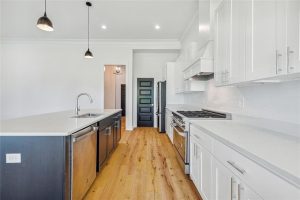Navigating the Landscape of Mortgage Options: A Comprehensive Guide
When stepping into the world of home ownership, one encounters a myriad of mortgage options, each tailored to meet different financial situations and housing needs. Understanding these options is crucial for potential homeowners to secure the best possible deal and ensure a stable financial future.
Firstly, the conventional loan serves as the go-to option for borrowers with commendable credit scores. It splits into two categories: conforming and non-conforming loans. Conforming loans adhere to standards set by the Federal Housing Finance Agency, making them eligible for purchase by Fannie Mae and Freddie Mac, thus offering lower interest rates. Conversely, non-conforming loans, such as jumbo loans, cater to those eyeing more expensive properties and exceed the set loan limits, hence carrying higher risk and requirements.
Jumbo loans stand out for financing luxury homes or properties in high-cost areas. With loan amounts exceeding standard limits, they necessitate higher credit scores and down payments but offer the advantage of funding more expensive homes, a necessity in certain real estate markets.
For those facing credit challenges or with minimal savings for a down payment, government-backed loans present a viable path. These include FHA loans, accessible with lower credit scores; VA loans, reserved for military personnel and veterans, offering benefits like no down payment or mortgage insurance; and USDA loans aimed at rural homebuyers, promoting homeownership in less urban areas.
The choice between a fixed-rate and adjustable-rate mortgage hinges on the borrower’s financial stability and housing plans. A fixed-rate mortgage guarantees a consistent monthly payment throughout the loan term, ideal for those seeking predictability and long-term residence. In contrast, adjustable-rate mortgages initially offer lower payments, which adjust over time based on market conditions, suited for those expecting short-term residency or anticipating income growth.
Beyond these primary types, niche loans like construction loans, interest-only mortgages, and renovation mortgages cater to specific buyer needs, from building a new home to purchasing and refurbishing an older property. Unique situations may also lead borrowers toward non-qualifying loans, providing flexibility but often at the cost of higher interest rates or down payments.
Choosing the right mortgage requires a thorough assessment of one’s financial health, housing needs, and future plans. Factors such as credit score, anticipated down payment, debt-to-income ratio, risk tolerance, and future income expectations play critical roles in this decision. Potential homeowners should engage with mortgage lenders and financial advisors to explore their options, ensuring they select the mortgage that aligns with their long-term goals and financial situation.
In conclusion, the journey to homeownership is paved with various mortgage options, each with distinct advantages and considerations. By understanding the nuances of each type and assessing their personal financial scenario, borrowers can make informed decisions, turning the dream of homeownership into a reality while maintaining financial security.

